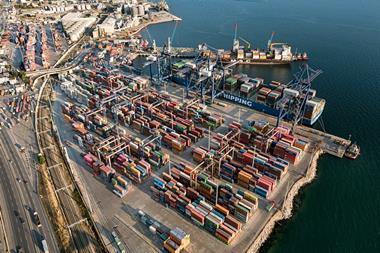 Customer service failures affecting the availability of vehicles at dealerships, in part to do with poor management of inventory and dealer swaps, are costing the European automotive industry millions of euros. The situation is complicated by OEM zero stock objectives, which are designed to squeeze inventory out of the manufacturing system early but often pass costs onto dealers.
Customer service failures affecting the availability of vehicles at dealerships, in part to do with poor management of inventory and dealer swaps, are costing the European automotive industry millions of euros. The situation is complicated by OEM zero stock objectives, which are designed to squeeze inventory out of the manufacturing system early but often pass costs onto dealers.
“We’ve seen unprecedented levels of the dealers being stuffed with stock in some markets,” noted Ben Waller (pictured), senior researcher at ICDP, the automotive distribution intelligence provider. He said there were pressures on dealers in terms of stock finance despite the fact that overstocking is more affordable at the moment because of low base rates.
“However, the cost of stocking, poor management and oversupply undermines the dealer position and, in the long term, has some damaging affect on brand position and residual values, as well as customer perception,” said Waller.
Figures from ICDP show that the market stock objective is 46 days but actual market stock is currently at 64 days in Europe. According to IDCP figures, for a volume manufacturer in Europe, one day’s worth of additional sales could tie up around €21m ($29m) of working capital. For the 18 days the industry is currently over the stock objective, ICDP calculates costs of around €378m, or €120,000 per main dealer.
“The dealers are paying most of this cost at present in most of the markets in Europe,” said Waller.
Furthermore, oversupply by volume manufacturers has resulted in a number of European markets reporting overall discount rates on the retail side of 18%.
While dealers are carrying higher inventory, it appears that it is often still the wrong supply of cars. Zero stock objectives, a priority for carmakers for some time, are affecting the availability of vehicles that meet the specifications of an increasingly demanding customer base. Those objectives involve changing the invoice points to factory release or arrival in the marketplace, to improve the working capital position for the manufacturer.
“This creates extra pressures and can undermine customer satisfaction priorities for dealers when thinking about the availability of the product for the customer,” said Waller. “Our surveys show that about 3.2% of overall turnover is lost through discounting and lost sales, due to non-availability of vehicle specifications and acceptable lead times to customers.”
There are extra logistics costs involved in this oversupply as well. According to ICDP figures, 2.2% of cost is incurred on discounting over-aged stocks and another 1.8% on cost is incurred in physical dealer-to-dealer transfers – swaps of vehicles – as retailers try to meet customer specifications on vehicles.
Despite these costs, OEMs appear loyal to centralised stocking, even when the stock is assigned to and paid for by dealers. According to Waller, where it has been in place for some time, dealers understand this system better. It can work well when it is aligned to bonus schemes and good analysis of data from national sales companies. But Waller added that it is up to trading rules and transport providers to support the efficient swap of stocks between those dealers.































